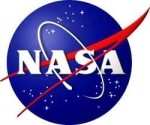NASA Device Inducted Into Space Technology Hall of Fame
 A rotating device developed by NASA inventors to grow better
living tissue specimens was inducted into the Space Technology Hall
of Fame last week. The Space Foundation honored the NASA team who
created the device, which promises help for several diseases,
during a ceremony at the 27th National Space Symposium in Colorado
Springs, CO.
A rotating device developed by NASA inventors to grow better
living tissue specimens was inducted into the Space Technology Hall
of Fame last week. The Space Foundation honored the NASA team who
created the device, which promises help for several diseases,
during a ceremony at the 27th National Space Symposium in Colorado
Springs, CO.
Developed in 1986 by a group of NASA engineers and researchers
at the agency's Johnson Space Center in Houston, the device, known
as the bioreactor, enables the growth of tissue, cancer tumors and
virus cultures outside the body in space and on Earth. It has many
advantages over typical laboratory methods. Lab-grown cell cultures
tend to be small, flat and two-dimensional, unlike normal tissues
in the body. However, tissues grown in the bioreactor are larger
and three-dimensional, with structural and chemical characteristics
similar to normal tissue. The bioreactor has no internal moving
parts, which minimizes forces that might damage the delicate cell
cultures.
Three of the co-developers of the bioreactor also are being
inducted in the Space Technology Hall of Fame: Dr. David Wolf, NASA
astronaut, physician and electrical engineer; Tinh Trinh, senior
mechanical engineer, Wyle Integrated Science and Engineering Group;
and Ray Schwarz, chief engineer and co-founder of Synthecon
Inc.
The bioreactor has been used for experiments aboard the space
shuttle, the Russian Mir space station and on Earth. Researchers
across the United States use this technology to study cancer, stem
cells, diabetes, cartilage and nerve growth, and infectious
disease. Researchers at the National Institutes of Health used the
methods to propagate the human immunodeficiency virus, or HIV, in
artificial lymph node tissue. This research resulted in the ability
to study the virus life cycle under controlled conditions outside
of the human body.
The bioreactor is a spinoff technology that entered the
commercial world when Synthecon licensed it in 1993. Regenetech
Inc. licensed 11 patents from Johnson in 2001 to produce
three-dimensional tissues in the bioreactor. Regenetech, through a
special NASA agreement, provides the technology to researchers
pursuing rare disease treatments. In December, 2010, Emerging
Healthcare Solutions Inc. acquired a sublicense from Regenetech to
use the bioreactor. The bioreactor is manufactured for commercial
sale by Synthecon.
A closed tubular cylinder forms the bioreactor's cell culture
chamber, which is filled with a liquid medium in which cells grow.
The chamber rotates around a horizontal axis, allowing the cells to
develop in an environment similar to the free fall of microgravity.
Oxygen, required by cells for growth, is fed into the liquid medium
through a porous wall in the chamber. The importance of this cell
culture technique is that fluid mechanical conditions obtained in
microgravity, and emulated on Earth, allow the growth of tissues in
the laboratory that cannot be grown any other way.
The 2011 Space Technology Hall of Fame organizational inductees
are those that developed the technology and refined it for
commercial use: NASA's Johnson Space Center, Regenetech Inc. and
Synthecon Inc. All three are based in Houston.
 ANN's Daily Aero-Linx (08.27.25)
ANN's Daily Aero-Linx (08.27.25) ANN's Daily Aero-Term (08.27.25): Class C Service
ANN's Daily Aero-Term (08.27.25): Class C Service ANN FAQ: Submit a News Story!
ANN FAQ: Submit a News Story! Airborne-NextGen 08.26.25: Iran UAV Knockoffs, X-37B Spaceplane, Army Training
Airborne-NextGen 08.26.25: Iran UAV Knockoffs, X-37B Spaceplane, Army Training Classic Klyde Morris (08.25.25)
Classic Klyde Morris (08.25.25)



